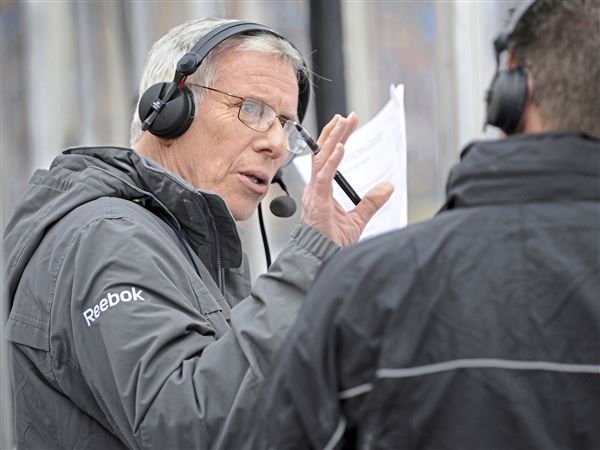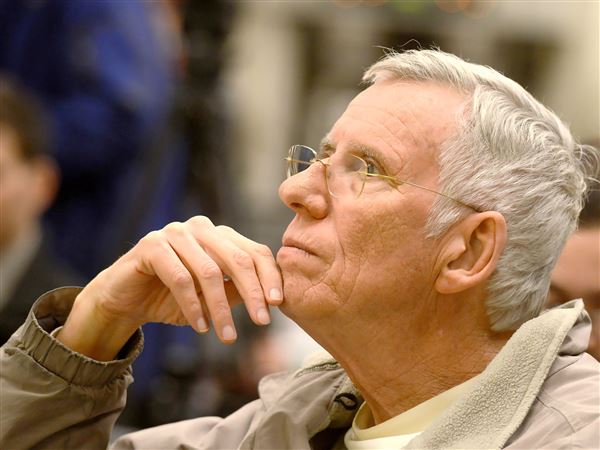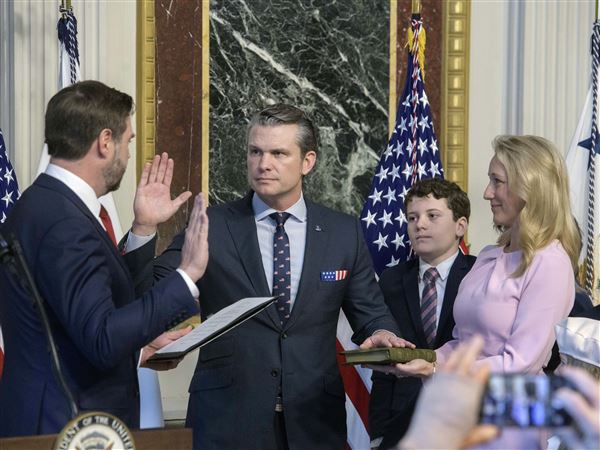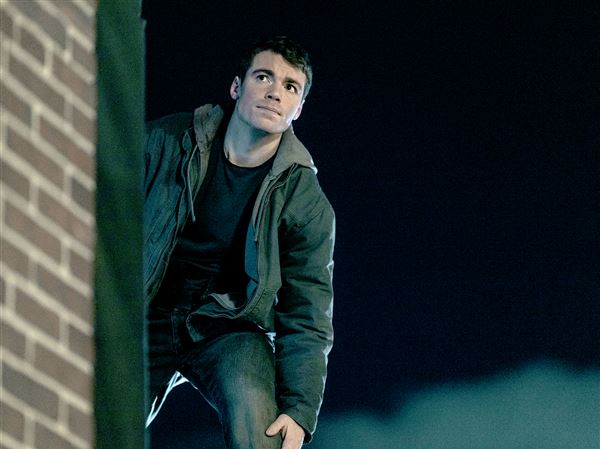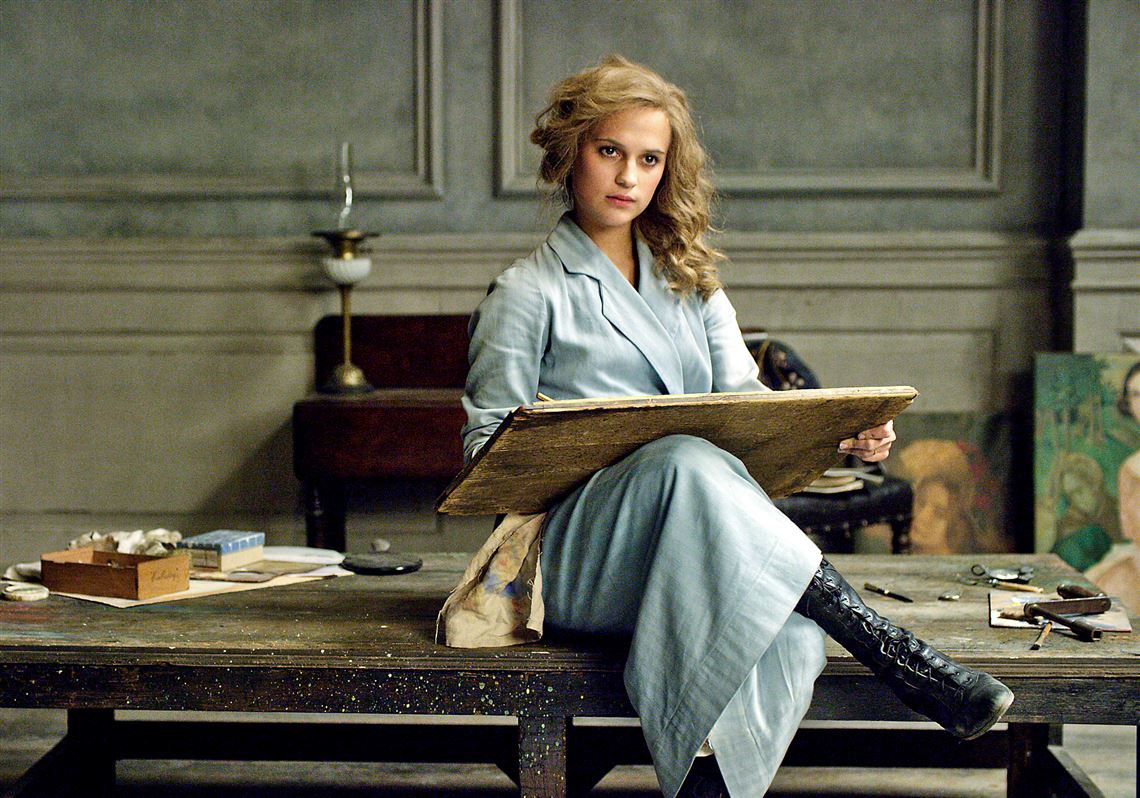TORONTO — The canvas was one of the most terrifying things Alicia Vikander had ever seen.
It was big. It was white. It was blank.
And she was supposed to learn how to be an artist or convincingly portray one on screen.
If she had been a dinner party guest and someone suggested charades, she would have happily said, “Love to.” But, the actress said, “If someone mentioned Pictionary, I would probably throw myself under the table because I would get so nervous, I can’t even draw a line on a paper.”
Along came “The Danish Girl,” however, in which she was cast as portrait artist Gerda Wegener, married to successful landscape painter Einar Wegener (Eddie Redmayne). After six years of marriage, Einar begins living as a woman named Lili in 1920s Europe and decides to undergo pioneering gender confirmation surgery. That is the term preferred rather than “sex change” operation.
“The Danish Girl,” now in limited release, opens in Pittsburgh on Christmas.
In addition to the emotional rigors of the role and movie, launched before the name Caitlyn Jenner became part of the cultural landscape, Ms. Vikander needed to stand with assurance in front of a canvas. “They gave me a piece of charcoal, that was my first task .…You have three minutes, the task is you can’t lift the charcoal off the paper.”
That instilled confidence to do the quick sketches the story required. She still has some “very nice charcoals and drawing books” from her lessons, she said during the Toronto International Film Festival in September when the movie had its North American premiere.
The 27-year-old native of Sweden, whose English is accented, is not just having a moment but a year. On Dec. 9, she was nominated for a Screen Actors Guild Award for her supporting performance in “The Danish Girl.” Less than 24 hours later, Golden Globe voters nominated her twice — for her leading role (as they saw it) in “The Danish Girl” and her supporting turn in “Ex Machina” as a beautiful humanoid robot.
Earlier this year, she appeared in “The Man From U.N.C.L.E,” had a small role in “Burnt” with Bradley Cooper and was on screen as real-life antiwar activist and author Vera Brittain in “Testament of Youth.” Still to come: A new Jason Bourne installment opposite Matt Damon, “The Light Between Oceans” about a lighthouse keeper, his wife and a baby who washes up in a rowboat, and the 17th-century romance “Tulip Fever.”
It had been at another awards ceremony, the EE British Academy Film Awards (also known as the BAFTAs) where Ms. Vikander first met Mr. Redmayne. They were presenters at the Royal Opera House in London in 2014 and were “both so nervous,” but they did it together in a serendipitous sign of what was to come.
Earlier this year, Mr. Redmayne accepted armfuls of honors for “The Theory of Everything” in which he played Stephen Hawking. Like Ms. Vikander, he will be back on the black-tie awards circuit for “Danish Girl.”
“Eddie, he’s probably one of the most sweet, wonderful guys. He has these open arms. It was easy to work with him from the get-go. Acting, it’s all about having trust and relying on being comfortable with somebody else. He is very sensitive as an actor.”
“We always felt we gave each other the room to never have any boundaries of how far you could try and go,” she said, and that meant looking for nuances with every take. The leads, along with director Tom Hooper (“The King’s Speech,” “Les Miserables”), were striving to “find the essence of these two people’s journeys,” she said, with one loving the other enough to support brave, risky, unprecedented decisions.
The movie is based on David Ebershoff’s novel “The Danish Girl,” which screenwriter Lucinda Coxon adapted into a screenplay. In the movie’s press notes, Ms. Coxon says, “I thought of them as a couple who loved one another but also as a pair of artists who were always creating together. These two were constantly seeking to liberate one another, and the question became just how much change a marriage could accommodate.”
Ms. Vikander says, “We wanted to see how much information we could gather. Just for me, what I remember when I saw pictures of Gerda and Lili — and knowing the time that they lived in — they were extremely artistic and extravagant and it was all like playing in big costumes.” They looked like women ahead of their time.
She also sought out those who, like Gerda, watched loved ones in transition. “That was something that was really very meaningful to me, to meet those people who told me their stories.
“Everyone has very personal stories, but they’re all so open, being very honest in telling their side of it, and so, in the end, as an artist, I think you gather everything you can and you have your artistic license to create something that will work to enhance this story as much as you can.”
The actress, concluding interviews at a Toronto hotel before donning a custom-made black Louis Vuitton gown of silk satin, crepe and leather for a red carpet appearance, acknowledged, “a lot of things have come up on the map that were not there when we started to work on our film. That’s just been a wonderful thing because the issues that the transgender community goes through are on a scale which is just unbelievable now.”
She cites statistics about suicidal thoughts and murder rates. “It’s hideous reading about this but then to know that, in the media and society, it’s an awareness that has now come to the surface and people talk about things and the conversations it’s kicked off.
“And for our film to come out during that time and hopefully be a part of that, that’s — of course — wonderful.”
Movie editor Barbara Vancheri: bvancheri@post-gazette.com or 412-263-1632. Read her blog: www.post-gazette.com/madaboutmovies.
First Published: December 20, 2015, 5:00 a.m.
